Whether you’re new to making guitar pedals, or if you have a few builds already under your belt, you’re probably wondering about the best way to pursue the hobby.
One easy way to start building guitar pedals is building then on PCBs (printed circuit boards). You can often get a guitar pedal PCB kit for many of your favourite pedals. It’s also relatively simple to follow the directions for a PCB kits, making them accessible for beginners.
Stripboard, on the other hand, is a little less accessible to beginners, but opens the hobby up to so many more possibilities. A lot of novice DIY pedal builders can be intimidated by stripboard, but diving in can be a good learning experience.
This article is going to assume that you’re new to guitar pedal making and you’re unsure whether you should start with a PCB kit or whether you should start making something you really want to make on stripboard. I think both approaches have merit, but keep in mind that I primarily make guitar pedals on stripboard (reasoning to follow). I made a couple pedals using PCB kits when I first started, but quickly moved onto stripboard. So I may be a little biased here.
The Case For Making Guitar Pedals On PCBs
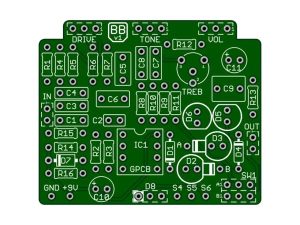 Making guitar pedals on PCBs, at least as a beginner, make approaching the whole hobby a lot easier. While you can just buy a PCB on its own, a lot of companies will sell an entire kit that includes the PCB and all the parts you need to make your own guitar pedal at home. So all you need is pedal making gear.
Making guitar pedals on PCBs, at least as a beginner, make approaching the whole hobby a lot easier. While you can just buy a PCB on its own, a lot of companies will sell an entire kit that includes the PCB and all the parts you need to make your own guitar pedal at home. So all you need is pedal making gear.
With the kit, you’re also usually given instructions, or at least a parts list, so you know where each component goes. It’s just a matter of putting each component in the right place and soldering it. This can be challenging if it’s your first pedal build, but it’s rewarding when it works!
The other big advantage of PCBs, especially for beginners, is that you can often succeed in building something a little more complex than you would on stripboard because building on a PCB is easier overall. So, while you may need to start with a pedal that only has a dozen or so components on it for stripboard, you may be able to get away with something more in depth if it’s on a PCB.
So, for beginners, a PCB kit makes building your first guitar pedal a lot easier. Since you have to order the PCB/kit from a manufacturer, you’re slightly limited in terms of what you can get, but you can usually find a few choices of different effects that are similar to or a clone of something you’ve heard of.
The Case For Making Guitar Pedals On Stripboard
 While starting a new guitar pedal making hobby with stripboard can be a little more intimidating, it opens things up to a lot more possibilities. As mentioned, PCB manufacturers limit themselves to what they know they’re going to sell, so you may not be able to find that one pedal that you really want to make. Meanwhile, there are dozens of websites out there that have stripboard layouts for you to browse.
While starting a new guitar pedal making hobby with stripboard can be a little more intimidating, it opens things up to a lot more possibilities. As mentioned, PCB manufacturers limit themselves to what they know they’re going to sell, so you may not be able to find that one pedal that you really want to make. Meanwhile, there are dozens of websites out there that have stripboard layouts for you to browse.
My easy guitar pedal builds section mostly suggests pedals that you can easily build on stripboard. Once you grow a bit and become better at building and soldering, you can quickly move to bigger builds.
Although in the previous section of this article, I went on about how PCBs are easier to build on, stripboard isn’t that much harder. Following the diagram takes a little bit more concentration, but assuming you’re not diving into something beyond your skill level, it’s not that bad! Personally I think the fact that there’s so much more choice with stripboard helps outweigh the slightly more difficulty building the thing.
Going further, while I wouldn’t suggest doing this on your first build, it’s easier to modify stripboard layouts; something that can only be done in limited ways on PCBs. If you get used to stripboard quickly, you’ll progress in your pedal building skills more quickly. Maybe you won’t be crazy modifications right away, but you’ll have a better appreciation of what everything does and learn more quickly.
Enjoying This Component Guide?
Learn more about stripboard, PCBs, and other guitar pedal components.
Ultimately, It’s Up To You
Obviously you don’t need to choose one or the other. If you’re hardcore into stripboard but see a cool PCB kit, you can swap of course! This article is more about which method to start with.
In my opinion, while I’m personally more into building guitar pedals on stripboard, if you’re looking at building your very first pedal, go and find a PCB kit. It’s a lot less likely that something will go wrong and debugging it will be a lot easier if something does because there are fewer variables to work with. Assuming you like making guitar pedals and you’ve gotten comfortable with soldering, take a look at some entry level stripboard projects and push on from there.
However, if you’ve built a few PCB kits and you’re nervous about jumping into stripboard projects, my advice would be to go for it. You may have to take a slight step back in complexity, but as I mentioned, it opens you up to so many other pedals, you’ll be spoiled for choice. Then you can get into some modifications and really start to get creative with things.
But the good news is, you can’t go wrong.
Related posts:
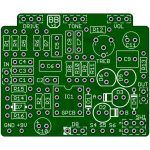 What Is A PCB?
What Is A PCB?
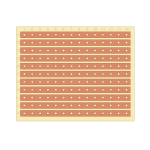 What Is Stripboard And How Do You Read Layouts?
What Is Stripboard And How Do You Read Layouts?
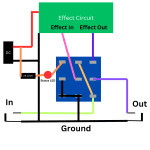 How To Wire A Guitar Pedal Foot Switch (3PDT)
How To Wire A Guitar Pedal Foot Switch (3PDT)
 How To Wire A Guitar Pedal DC Power Jack
How To Wire A Guitar Pedal DC Power Jack
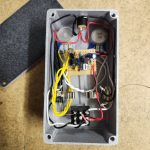 How To Wire Guitar Pedal Enclosures
How To Wire Guitar Pedal Enclosures
 What Is True Bypass In Guitar Pedals?
What Is True Bypass In Guitar Pedals?
 How Do Guitar Pedal (And Guitar) Volume Knobs Work?
How Do Guitar Pedal (And Guitar) Volume Knobs Work?
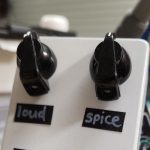 How Does A Drive, Gain, Or Distortion Knob Work?
How Does A Drive, Gain, Or Distortion Knob Work?
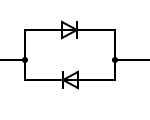 What’s The Difference Between Symmetrical And Asymmetrical Clipping?
What’s The Difference Between Symmetrical And Asymmetrical Clipping?
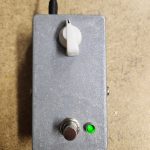 A Versus B Potentiometers (And When To Use Them)
A Versus B Potentiometers (And When To Use Them)

